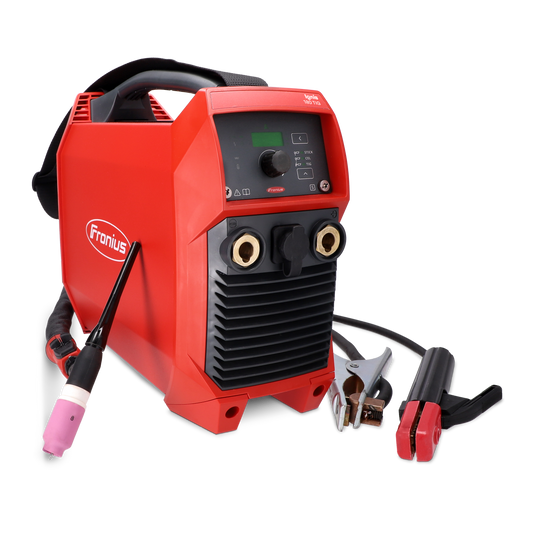Some TIG welders or multi-process welders don’t offer the full range of options that you could need for a TIG welding project. For example, if you need to weld aluminum, AC will be a necessity for a TIG welder.
If you own a TIG welder with a wider range of options, you need to know how to use them best without blowing a hole in your work piece or running a crooked weld bead. Here are some tips for modifying your TIG welding set up.
Choosing the Right Cup Size for TIG Welding
There are a lot of myths out there about how to pick your TIG cup. For example, some welders believe you need to choose the TIG cup based on size of your electrode, but that isn’t necessarily true. The most important part about choosing a cup is understanding how much space you’ll need on your pass. As you walk the cup, the right size will make it much easier to focus your arc.
For a more narrow root pass, you’ll need a smaller cup for the narrow weld joint. If you’re welding further out on a wider part of the weld joint, you’ll need to use a wider cup to keep the arc focused on the right part of the weld joint without getting the cup in the way.
TIG Weld with a Higher Frequency
Some TIG welder inverters offer the option to adjust your AC frequency, which can really focus your arc. However, taking your frequency too high could really mess up your weld if you don’t have a high quality tungsten. Here are a few tips for jacking up your frequency:
For starters, you can crank up your frequency to 50 hz to just get a more focused arc in the weld puddle. In order to build up a fragile part, you can bump that up to 60 hz without letting things get too lively with your arc.
If you’re working on a tight edge, turn it up to 100 hz to get a higher degree of accuracy with your weld. Most welders rarely take their frequency over 150 hz for finer work. Once you get close to 400 hz, your arc and tungsten could become a bit unpredictable and you could do some serious damage to your work piece.
Welding in the 100-150 hz ballpark will serve you particularly well if you need to get some deep penetration in a smaller weld joint. If you’re dealing with a T-joint, you’ll especially need a focused arc that will get sufficient penetration into the metal.
Besides focusing your arc at a higher frequency, you can also improve your travel speed a bit. Just make sure you’re ready to pump some serious wire into the weld puddle when you get the weld puddle moving.
TIG Welding with a Foot Pedal
One of the most popular modifications for a TIG welding set up is a foot pedal that allows you to control your amperage without having to take your hand off your torch or redirect your attention as you weld.
Sometimes the standard foot pedal that comes with a TIG welding machine will not give you enough control over your welder’s settings, so if you haven’t had success with a foot pedal in the past, don’t rule out picking up a higher quality pedal that will be more sensitive and easier to use.



